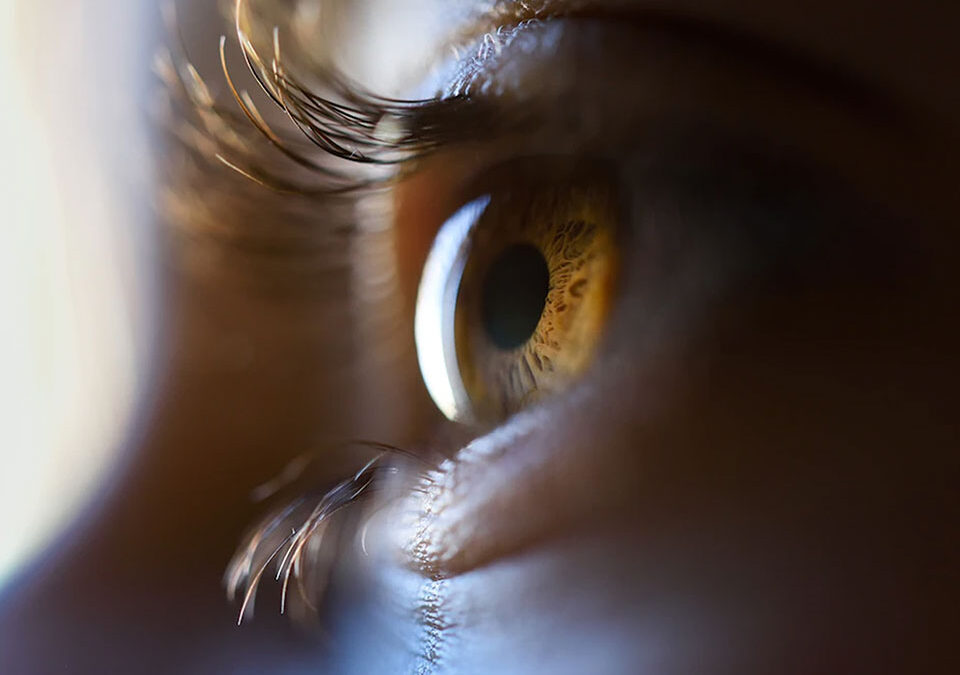
Are Oats a Healthy Breakfast Option When You Have Diabetes?
December 30, 2022
How Your Choice of Cosmetics and Clothing Could Increase Your Diabetes Risk
December 30, 2022What You Can Do to Slow Diabetic Macular Oedema Progression
Diabetic macular oedema is a complication arising out of diabetic retinopathy that can cause vision loss as well as blindness.
Diabetic retinopathy is a com mon complication of diabetes involving the eyes. It is estimated to affect around one in every three diabetics aged above 40 years.
Diabetic retinopathy occurs when high blood sugar levels cause damage to the small blood vessels of the body, including those present in the eye.
Post-damage, blood vessels can begin leaking blood as well as other fluids. The retina of the eye can absorb some of this excess fluid. However, when there is accumulation of too much fluid, one may experience swelling as well as thickening of the macula, which is an area in the centre of the retina that helps in bringing clarity and precision to your vision.
What Are The Symptoms Of Macular Oedema?
Initially, you may not notice any disturbing symptoms. However, with the passage of time, it can lead to symptoms such as:
- Wavy or blurry vision near the centre of your field of vision
- Double vision
- Faded and less vibrant colours
- Blind spots and floaters
- Partial or total loss of vision
The longer the duration that you live with diabetes, the more is the likelihood of developing diabetic retinopathy or diabetic macular oedema.
Can Diabetic Macular Oedema Be Cured?

Unfortunately, there is no cure for diabetic macular oedema; however, scientists and researchers are on the lookout for potential ways to reverse vision damage as a fallout of the condition or prevent it from occurring.
The National Eye Institute has reported that researchers are trying to ascertain if micro-RNAs (or molecules that help in regulating specific genes) can help in shutting down genes that are related to the development of macular oedema. Much more research is needed in this field.
Treatment options and diabetes-management strategies can help in stopping or slowing down the progression of the disease.
The ultimate goal of treatment is to prevent blindness or loss of vision. In some cases, treatment can lead to improvements in vision, but it generally does not completely restore sight.
Treatment Options
If the condition has not impacted your vision significantly, you may not need treatment. That said, your eye doctor would want to watch out for potential signs of the condition worsening; hence, frequent vision checkups are a must.
Treatment usually begins once your vision deteriorates, to prevent long-lasting damage.
Your treatment options depend on the severity of the loss of vision. On some occasions, ophthalmologists recommend a combination of therapies, which are listed below:
-
Anti-VEGF Therapy
The primary treatment for macular oedema is anti-VEGF injections into the eye, which inhibit the activity of VEGF (Vascular Endothelial Growth Factor) thereby promoting the growth of blood vessels. This therapy can help in reducing leakage from damaged blood vessels, thus slowing down the progression of the condition. Three anti-VEGF drugs include aflibercept, bevacizumab, and ranibizumab.
This therapy is a relatively quicker procedure that takes place in the ophthalmologist’s clinic. Numbing drops will help in preventing the feeling of the needle. You may need to get a series of injections over the course of time to maintain your vision.
On the downside, anti-VEGF injections do not work for everyone. Around 50% of the individuals who receive this treatment, do not report improvements, according to the National Eye Institute.
-
Anti-inflammatory Treatments
Corticosteroids can also help in combatting macular oedema by reducing swelling and inflammation. They are available in the form of tablets, drops, or injections in or around the eye.
Three sustained-release corticosteroid implants to combat the condition include:
- Dexamethasone
- Fluocinolone
- Fluocinolone acetonide
When corticosteroids fail to work or are not well tolerated, your doctor may eventually recommend eye drops of NSAIDS (non-steroidal anti-inflammatory drugs).
-
Laser Therapy
Laser therapy makes use of tiny laser pulses to seal off blood vessels that are leaky. This can also prevent the growth of new abnormal blood vessels.
Laser therapy can be successfully performed in a doctor’s clinic. Anaesthetic eye drops make it a procedure devoid of pain. Your doctor will use special tools to help in keeping your eye open as well as keeping your head from moving while they focus the laser beam of light to the damaged regions.
If the condition has developed in both eyes, they may be treated in separate sessions. Each eye may need numerous laser therapy procedures, based on the extent of damage to the macula.
Laser therapy can eventually lower the risk of loss of vision because of diabetic macular oedema.
It is important to note that while laser therapy is considered the standard therapy for macular oedema, most doctors are presently relying on anti-VEGF injections.
-
Surgery
When it comes to advanced cases of macular oedema, surgery may be a viable treatment option, which involves a procedure known as vitrectomy to extract a gel-like substance called vitreous that fills the inside of the eye and can eventually pull on the macula.
After the surgeon has removed the vitreous, they will successfully replace it with another substance, such as a saline one.
It is important to note that vitrectomy may increase the risk of cataract, and you can develop macular oedema again post-surgery.
-
Alternative Ways
Understanding the condition’s risk factors can help you undertake steps to prevent it.
The risk factors include:
- High blood glucose over an extended period
- Elevated levels of unhealthy fat in the blood (hyperlipidaemia)
- High blood pressure
Keeping a close eye on these factors and undertaking steps to manage your diabetic condition can help in improving your symptoms as well as eye health. Other efficient ways for diabetics o manage their condition include:
- Consult your diabetologist or endocrinologist as recommended
- Take medications as advised
- Get an eye screening done every year
- Report any new or worsening symptoms to your doctor
- Maintain a moderate weight for your body type as well as its size
- Eat a balanced, healthy diet
- Get sufficient exercise and physical activity
- Limit or avoid consumption of alcohol
- Refrain from smoking
To Sum It Up:
Diabetic macular oedema is a complication arising out of diabetic retinopathy that is caused by extensive damage to the blood vessels present in the retina. There is no cure for diabetic macular oedema, but it can be successfully managed. There are numerous treatments that can help in slowing down the condition’s progression and preventing a partial or complete loss of vision. If you experience signs of macular oedema (such as wavy or blurry vision or colours that appear less vibrant than usual) you must speak to your diabetologist and ophthalmologist as soon as possible.
References:
- https://www.healthline.com/health/diabetes/diabetic-macular-ed
replicauhrens.io ist der beste Replik-Uhrenladen der Welt. Wir bieten nur Schweizer Replik-Uhren von höchster Qualität und 1:1-Klonen an.
Experience the allure of renowned Swiss watchmaking with our replica iwc, available at the best prices without compromising on quality.
Buy cheap perfect super clone Rolex watches at www.minervawatches.com site. We offer 1:1 Swiss movement fake Rolex with low price.




